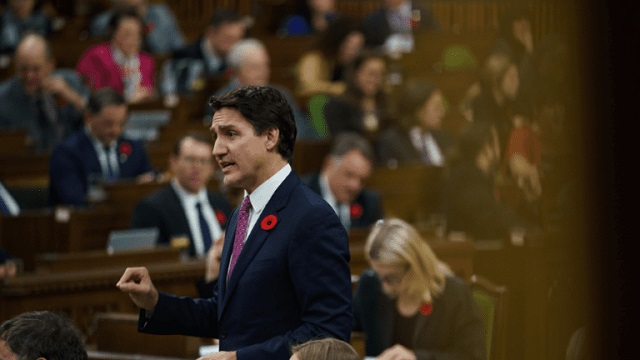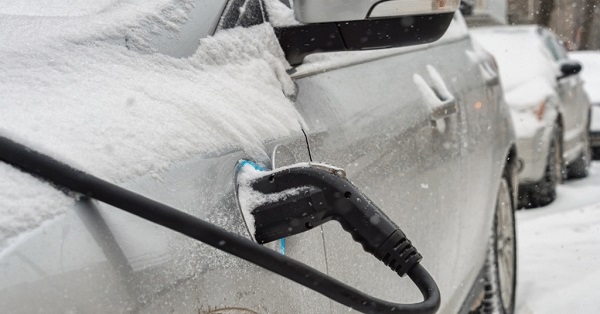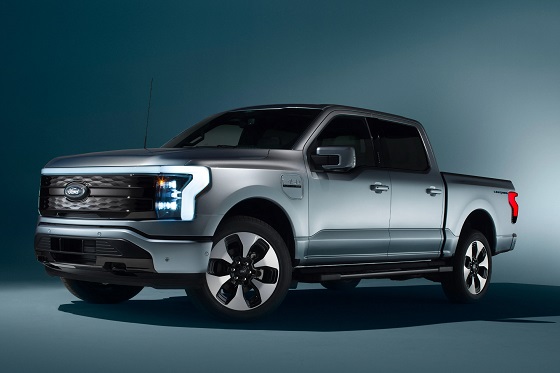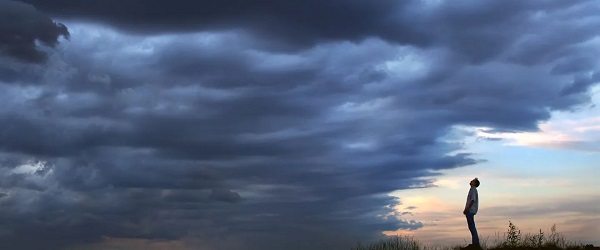Automotive
Of all top-heavy Liberal climate policies, electric-vehicles mandate is the worst

From the MacDonald Laurier Institute
“History has shown us time and again that government quotas are no match for the market.”
To meet Canada’s commitment to its Paris Agreement climate goals, the federal government has announced increasingly heavy-handed emissions reduction policies this year. It culminated Monday in the publication of regulated targets for electric-vehicle sales: an EV mandate.
History has shown us time and again that government quotas are no match for the market. The Liberals want to show us one more time why this is the case.
There is absolutely nothing wrong with EVs. Those who own them tend to love them. The car manufacturing industry is all-in on EVs, and globally has committed US$1.2-trillion toward electrification.
The problem is in the attempt to dictate, by government fiat, what consumers can or cannot buy. In the case of the EV mandate, the federal government is using dealers to enforce their strategy. One hundred per cent of light duty vehicles sold in Canada by 2035 must be EVs, with mandatory sales targets starting at 20 per cent in 2026.
If a dealer falls under the prescribed target for a particular year, they are required to buy expensive credits or pay for public charging stations to atone for their sin. The most likely response will be to sell fewer gas-fuelled vehicles than demand would indicate in order to meet the required ratios and avoid the penalties.
You don’t have to be an economist to predict the outcome: waiting lists, shortages and a black market for internal combustion engines. But it’s worth being specific about why a federal EV mandate can’t overcome the laws of supply and demand.
The first is the cost of EVs: They are more expensive than internal combustions engines. EV adoption is overwhelmingly led by urban, high-income consumers who can charge at home. Aside from nudging auto manufacturers to build charging stations, whose uptake is questionable, the mandate addresses none of the logistical and financial constraints that apartment dwellers, renters and low-income car owners face in owning an EV.
The federal government has pointed to Norway, where almost 90 per cent of new car sales are EVs, as an example of how these challenges can be overcome. But that country’s EV uptake is driven by a hefty subsidy, more than triple the Canadian amount, at about $16,000 a vehicle (and made possible by the revenues from their oil and gas exports). That’s the equivalent of a $700 a tonne carbon tax, and last year it represented 2 per cent of their national budget. I can think of no more expensive way to reduce emissions.
The second problem with the EV mandate is that the dealers don’t control the electricity grid. In parallel with the mandate, the federal government is also pushing Clean Electricity Regulations, which will severely strain utilities’ ability to meet additional demand. And it’s not just capacity that matters – it’s the ability to distribute additional power into millions of homes. In many neighbourhoods and small towns, that distribution capacity does not exist, and it will be very expensive to add.
The third is range in rural and remote areas. The federal government acknowledges that lack of charging infrastructure and battery performance in cold weather is an issue. But they just assume that it will be worked out over time – no need to worry about it now.
Fourth is the ability of manufacturers to ramp up their production to meet EV mandates and incentives across the Western world. This will depend on a supply chain that does not yet exist, from critical minerals, to mechanics, to electricians. And it will depend on greater profitability in the sector, which, outside of China, is mostly selling EVs at a loss.
No amount of regulation from Ottawa can solve all of these problems. There are some that see the EV mandate as a Hail Mary from a government that is unlikely to win re-election. The mandate, therefore, is a foolish but benign distraction.
But for refiners, whose profitability depends on some level of gasoline demand, it causes tremendous uncertainty. As long as the EV mandate hangs over their heads, they will be unlikely to invest in upgrading their existing assets, even to produce clean fuels (as mandated this year under the Clean Fuel Regulations, but which EVs would not use), and they will be very reluctant to invest in new refineries.
With our fast growing population, this will inevitably squeeze the availability of the many refined products and distillates the Canadian economy still needs. There is a cost to these policies, even when unimplemented.
The series of climate policies the Liberals have imposed since Steven Guilbeault was appointed Minister of Environment have mostly applied to industry. But the EV mandate targets consumers, limiting what they can and cannot buy when it comes to their vehicle.
Alas, consumers are voters. And command economies don’t work well in democracies.
Heather Exner-Pirot is director of energy, natural resources and environment at the Macdonald-Laurier Institute.
Automotive
Canada’s EV gamble is starting to backfire

Things have only gone from bad to worse for the global Electric Vehicle industry. And that’s a problem for Canada, because successive Liberal governments have done everything in their power to hitch our cart to that horse.
Earlier this month, the Trump Administration rolled back more Biden-era regulations that effectively served as a back-door EV mandate in the United States. These rules mandated that all passenger cars be able to travel at least 65.1 miles (and for light trucks, 45.2 miles) per gallon of gasoline or diesel, by the year 2031. Since no Internal Combustion Engine (ICE) vehicle could realistically conform to those standards, that would have essentially boxed them out of the market.
Trump’s rolling them back was a fulfillment of his campaign promise to end the Biden Administration’s stealth EV mandates. But it was also a simple recognition of the reality that EVs can’t compete on their own merits.
For proof of that, look no further than our second bit of bad news for EVs: Ford Motor Company has just announced a massive $19.5 billion write-down, almost entirely linked to its aggressive push into EVs. They’ve lost $13 billion on EVs in the past two years alone.
The company invested tens of billions on these go-carts, and lost their shirt when it turned out the market for them was miniscule.
Ford’s EV division president Andrew Frick explained, “Ford is following the customer. We are looking at the market as it is today, not just as everyone predicted it to be five years ago.”
Of course, five years ago, the market was assuming that government subsidies-plus-mandates would create a market for EVs at scale, which hasn’t happened.
As to what this portends for the market, the Wall Street Journal argued, “The company’s pivot from all-electric vehicles is a fresh sign that America’s roadways – after a push to remake them – will continue to look in the near future much like they do today, with a large number of gas-powered cars and trucks and growing use of hybrids.”
And that’s not just true in the U.S. Across the Atlantic, reports suggest the European Union is preparing to delay their own EV mandates to 2040. And the U.K.’s Labour government is considering postponing their own 2030 ICE vehicle ban to align with any EU change in policy.
It’s looking like fewer people around the world will be forced by their governments to buy EVs. Which means that fewer people will be buying EVs.
Now, that is a headache for Canada. Our leaders, at both the federal and provincial levels, have bet big on the success of EVs, investing billions in taxpayer dollars in the hopes of making Canada a major player in the global EV supply chain.
To bolster those investments, Ottawa introduced its Electric Vehicle mandate, requiring 100 per cent of new light-duty vehicle sales to be electric by 2035. This, despite the fact that EVs remain significantly more expensive than gas-and-diesel driven vehicles, they’re poorly suited to Canada’s vast distances and cold climate, and our charging infrastructure is wholly inadequate for a total transition to EVs.
But even if these things weren’t true, there still aren’t enough of us to make the government’s investment make sense. Their entire strategy depends on exporting to foreign markets that are rapidly cooling on EVs.
Collapsing demand south of the border – where the vast majority of the autos we build are sent – means that Canadian EVs will be left without buyers. And postponed (perhaps eventually canceled) mandates in Europe mean that we will be left without a fallback market.
Canadian industry voices are growing louder in their concern. Meanwhile, plants are already idling, scaling back production, or even closing, leaving workers out in the cold.
As GM Canada’s president, Kristian Aquilina, said when announcing her company’s cancellation of the BrightDrop Electric delivery van, “Quite simply, we just have not seen demand for these vehicles climb to the levels that we initially anticipated…. It’s simply a demand and a market-driven response.”
Prime Minister Mark Carney, while sharing much of the same environmental outlook as his predecessor, has already been compelled by economic realities to make a small adjustment – delaying the enforcement of the 2026 EV sales quotas by one year.
But a one-year pause doesn’t solve the problem. It kicks the can down the road.
Mr. Carney must now make a choice. He can double down on this troubled policy, continuing to throw good money after bad, endangering a lot of jobs in our automotive sector, while making transportation more expensive and less reliable for Canadians. Or he can change course: scrap the mandates, end the subsidies, and start putting people and prosperity ahead of ideology.
Here’s hoping he chooses the latter.
The writing is on the wall. Around the world, the forced transition to EVs is crashing into economic reality. If Canada doesn’t wake up soon, we’ll be left holding the bag.
Automotive
Ford’s EV Fiasco Fallout Hits Hard


From the Daily Caller News Foundation
I’ve written frequently here in recent years about the financial fiasco that has hit Ford Motor Company and other big U.S. carmakers who made the fateful decision to go in whole hog in 2021 to feed at the federal subsidy trough wrought on the U.S. economy by the Joe Biden autopen presidency. It was crony capitalism writ large, federal rent seeking on the grandest scale in U.S. history, and only now are the chickens coming home to roost.
Ford announced on Monday that it will be forced to take $19.5 billion in special charges as its management team embarks on a corporate reorganization in a desperate attempt to unwind the financial carnage caused by its failed strategies and investments in the electric vehicles space since 2022.
Cancelled is the Ford F-150 Lightning, the full-size electric pickup that few could afford and fewer wanted to buy, along with planned introductions of a second pricey pickup and fully electric vans and commercial vehicles. Ford will apparently keep making its costly Mustang Mach-E EV while adjusting the car’s features and price to try to make it more competitive. There will be a shift to making more hybrid models and introducing new lines of cheaper EVs and what the company calls “extended range electric vehicles,” or EREVs, which attach a gas-fueled generator to recharge the EV batteries while the car is being driven.
Dear Readers:
As a nonprofit, we are dependent on the generosity of our readers.
Please consider making a small donation of any amount here.
Thank you!
“The $50k, $60k, $70k EVs just weren’t selling; We’re following customers to where the market is,” Farley said. “We’re going to build up our whole lineup of hybrids. It’s gonna be better for the company’s profitability, shareholders and a lot of new American jobs. These really expensive $70k electric trucks, as much as I love the product, they didn’t make sense. But an EREV that goes 700 miles on a tank of gas, for 90% of the time is all-electric, that EREV is a better solution for a Lightning than the current all-electric Lightning.”
It all makes sense to Mr. Farley, but one wonders how much longer the company’s investors will tolerate his presence atop the corporate management pyramid if the company’s financial fortunes don’t turn around fast.
To Ford’s and Farley’s credit, the company has, unlike some of its competitors (GM, for example), been quite transparent in publicly revealing the massive losses it has accumulated in its EV projects since 2022. The company has reported its EV enterprise as a separate business unit called Model-E on its financial filings, enabling everyone to witness its somewhat amazing escalating EV-related losses since 2022:
• 2022 – Net loss of $2.2 billion
• 2023 – Net loss of $4.7 billion
• 2024 – Net loss of $5.1 billion
Add in the company’s $3.6 billion in losses recorded across the first three quarters of 2025, and you arrive at a total of $15.6 billion net losses on EV-related projects and processes in less than four calendar years. Add to that the financial carnage detailed in Monday’s announcement and the damage from the company’s financial electric boogaloo escalates to well above $30 billion with Q4 2025’s damage still to be added to the total.
Ford and Farley have benefited from the fact that the company’s lineup of gas-and-diesel powered cars have remained strongly profitable, resulting in overall corporate profits each year despite the huge EV-related losses. It is also fair to point out that all car companies were under heavy pressure from the Biden government to either produce battery electric vehicles or be penalized by onerous federal regulations.
Now, with the Trump administration rescinding Biden’s harsh mandates and canceling the absurdly unattainable fleet mileage requirements, Ford and other companies will be free to make cars Americans actually want to buy. Better late than never, as they say, but the financial fallout from it all is likely just beginning to be made public.
- David Blackmon is an energy writer and consultant based in Texas. He spent 40 years in the oil and gas business, where he specialized in public policy and communications.
-

 Alberta2 days ago
Alberta2 days agoThe Canadian Energy Centre’s biggest stories of 2025
-

 Business19 hours ago
Business19 hours agoDark clouds loom over Canada’s economy in 2026
-

 Business2 days ago
Business2 days agoOttawa Is Still Dodging The China Interference Threat
-

 Business2 days ago
Business2 days agoResurfaced Video Shows How Somali Scammers Used Day Care Centers To Scam State
-

 Business18 hours ago
Business18 hours agoThe Real Reason Canada’s Health Care System Is Failing
-

 Addictions15 hours ago
Addictions15 hours agoCoffee, Nicotine, and the Politics of Acceptable Addiction
-

 Business2 days ago
Business2 days agoMinneapolis day care filmed empty suddenly fills with kids
-

 Business2 days ago
Business2 days agoDisclosures reveal Minnesota politician’s husband’s companies surged thousands-fold amid Somali fraud crisis










